A Visit to the Virginia Beach Airport
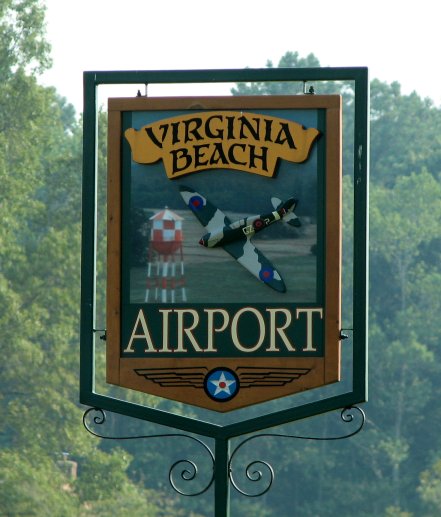
My father and I were recently privileged to enjoyed a visit to the Virginia Beach Airport, one of the homes for the aircraft of The Fighter Factory, an aircraft restoration company specializing in historical warbirds. The Fighter Factory is itself, a division of the Aviation Institute of Maintenance. The aircraft at this airport are almost all both museum-grade restorations and flying aircraft maintained in like-new condition. The airport itself is a working airport, supporting banner-carrying aircraft that ply the nearby recreational oceanfront with advertising banners. On the property, the owners have built a beautiful facility with two hangers that serve as home for a rotating stable of last-century aircraft that have been restored at the institute's schools. By arrangement, one can visit this private facility and wander unsupervised through whatever aircraft happen to be in the hangars. Visitors are politely asked to follow the rules of aircraft visitation: Ask before doing anything. Don't touch. Within those confines you can really get up close and personal and spend as much time as you like with some gorgeous airborn thoroughbreds. The planes are broken into Air Corps and Navy examples, each with its own hangar. I'd like to take you through the two hangars as they were populated on August 13, 2007.
The Air Corps Hangar
As we entered the doors of the Air Corps Hangar (left, facing, from the grass airstrip) we were greeted by a magnificent P-40e Warhawk built in 1941.
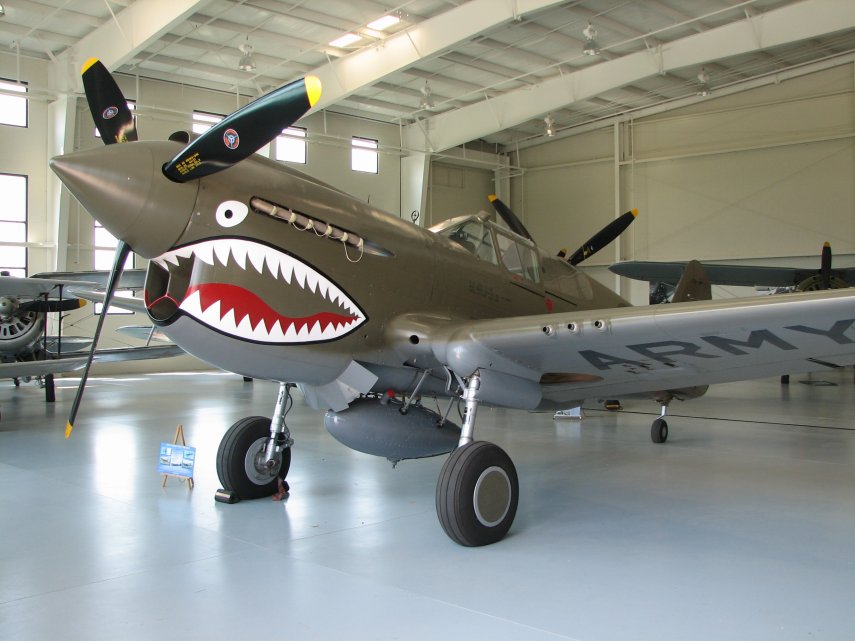
Early P-40s were among the first planes involved in the defense of Pearl Harbor during the attack. The type is most associated with Claire Chennault's Flying Tigers in China. This example is painted to represent a Flying Tiger in the period when the unit was absorbed into the U.S Army Air Corps after America's entry into the war.
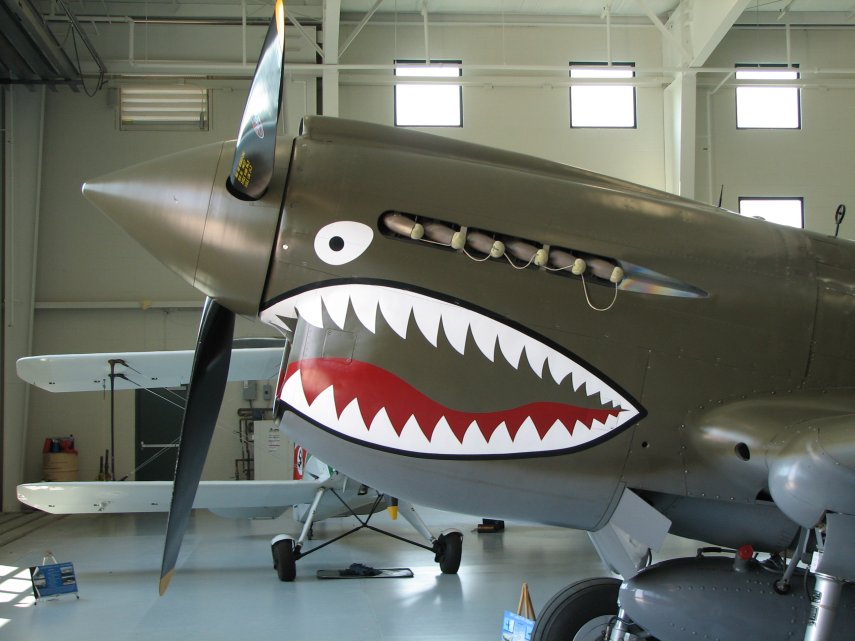
Detail of nose art
Turning to the right and beginning a counter-clockwise circuit of the hangar, we find a rare and gorgeously-restored Hawker Hurricane MK.XIIA. While the Spitfires were given most of the glory from the Battle of Britain, the Hurricanes flew nearly twice as many sorties as them. They were not as nimble as a Spit but pilots who flew both recognized the Hurri's ability to take more punishment and its stability as a gun platform. Note the German 88mm Flak cannon, searchlight, and BMW military motorcycle in the background.
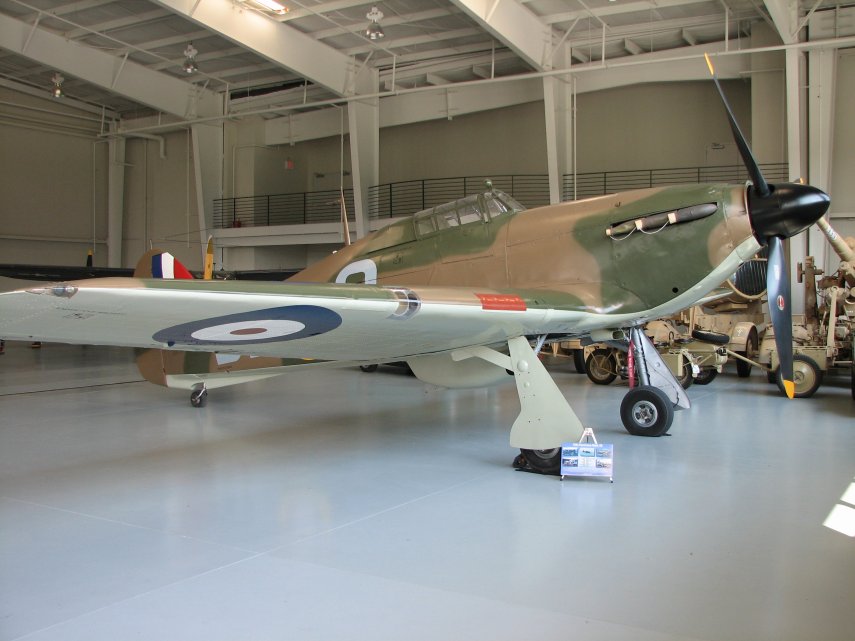
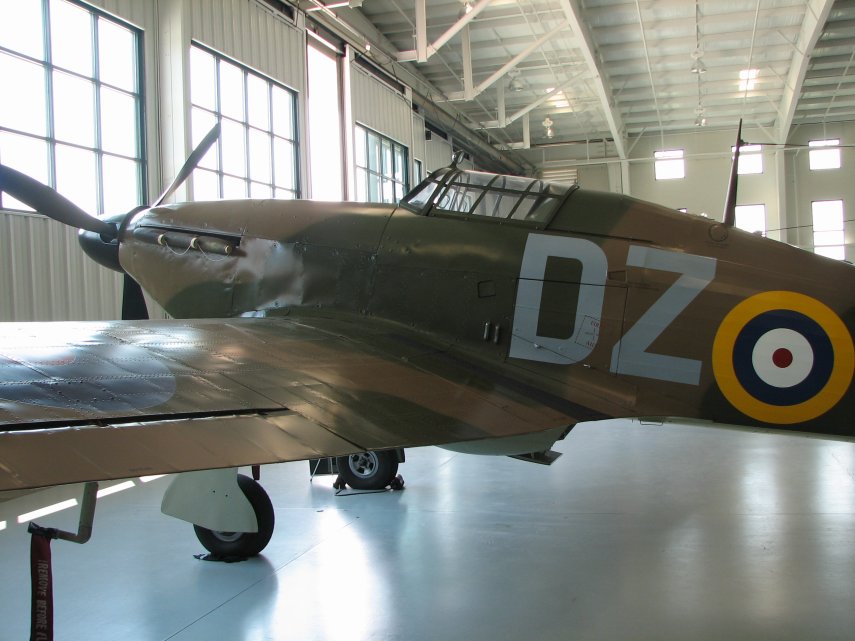
On around the circle we find a German v1 Buzz Bomb of the type that terrorized residents of Southeast England. This one has been cut away and its components have been labeled.
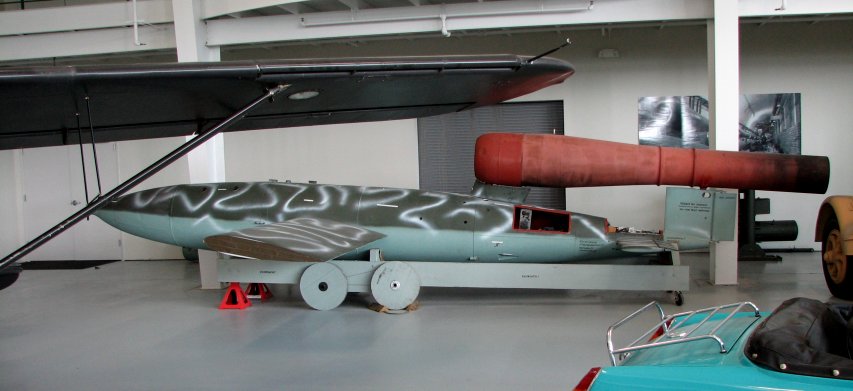
Next we find a 1950 Jaguar XK 120 speedster built for American roads. That's a 1944 Stinson L-5 liaison and spotting plane behind it. The Stinson was used to spot for artillery and to fly wounded out of the combat area.
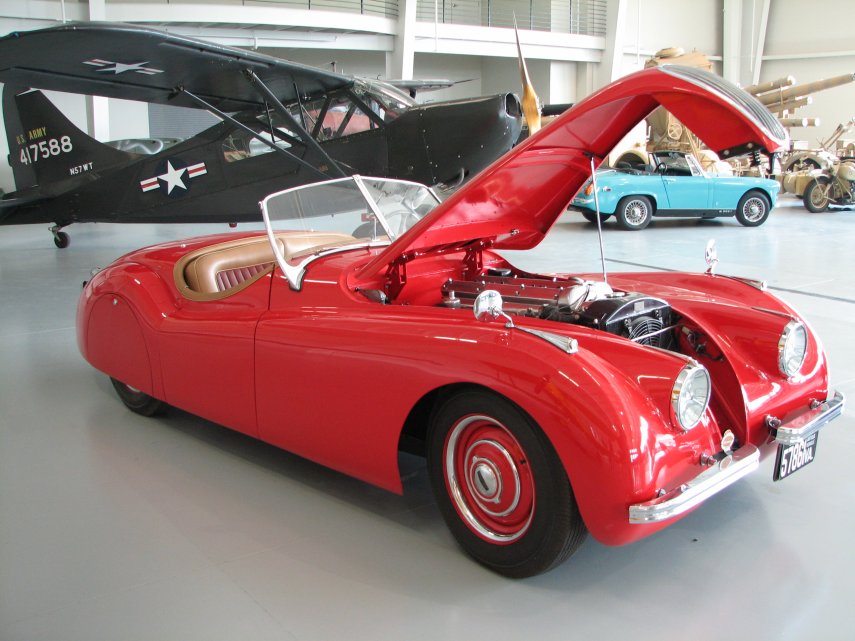
Here's a deHavilland Chipmunk phase two training plane dating from 1952 that once served at Cranwell Air Force College.

Next to it is a deHavilland DH82 Tiger Moth primary trainer from 1940, built by the Morris Autombile Company. Though the design dated from 1932, notice the similarities between it and the later Chipmunk.
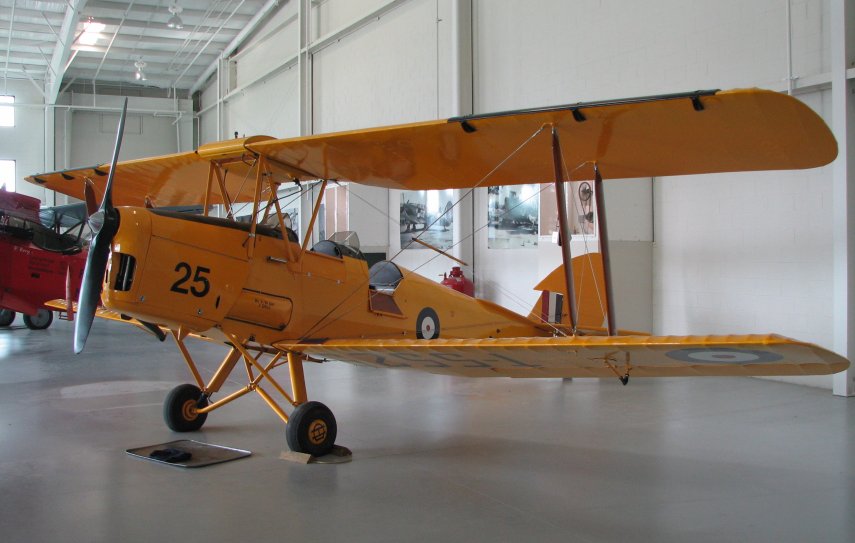
Next we come across one of only two non-flying aircraft at the Virginia Beach facility, a Fokker DVII. This aircraft was one of the most successful fighters of WWI. Behind this aircraft is the Soviet Polikarpov I-15bis high-wing monoplane fighter.
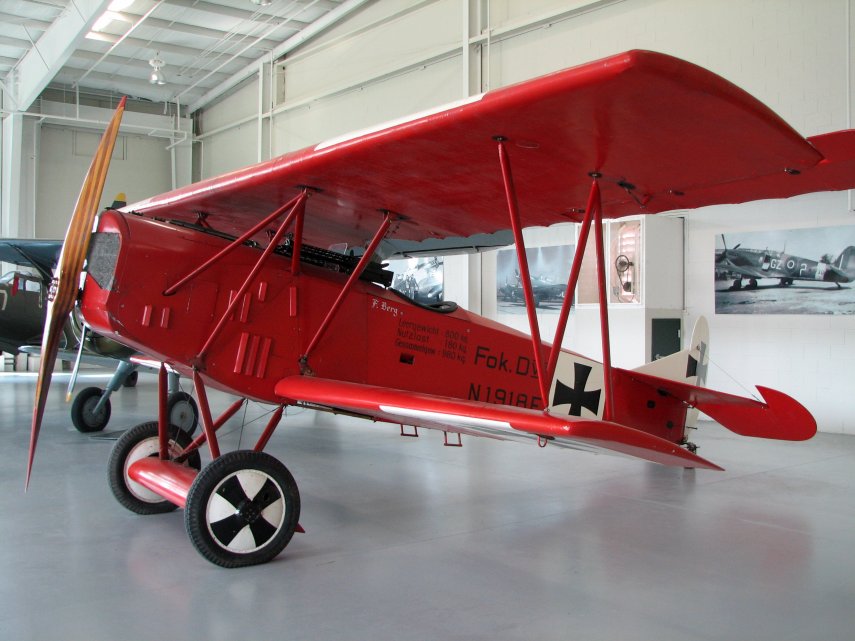
Behind the Polikarpov's wings we find the second non-flying aircraft at the Beach facility, a Bell P-63e King Cobra. The P-63 was an upgraded version of the P-39 Airacobra. Both sported an engine mounted behind the pilot to make way for a canon firing through the propeller spinner. Both versions were largely export products. This one is painted to represent its life as a Soviet infantry support aircraft.
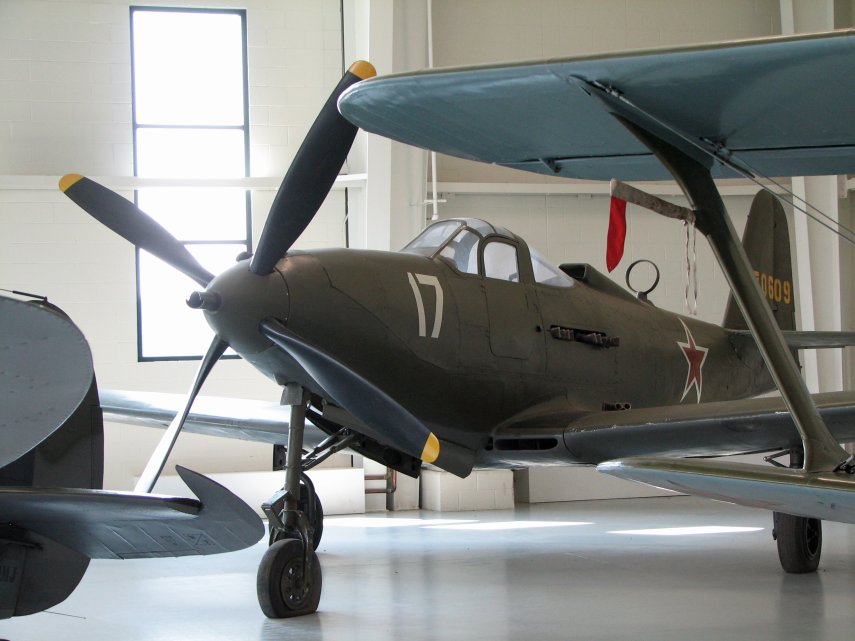
To its left is a brilliant example of a gull-winged Polikarpov I-153 fighter dating from the end of WWII. The I-153 was a development of the I-15bis ("bis" meaning version 2) mentioned above, with a more powerful engine and retractable landing gear. This one was rescued from a swamp near Murmansk.
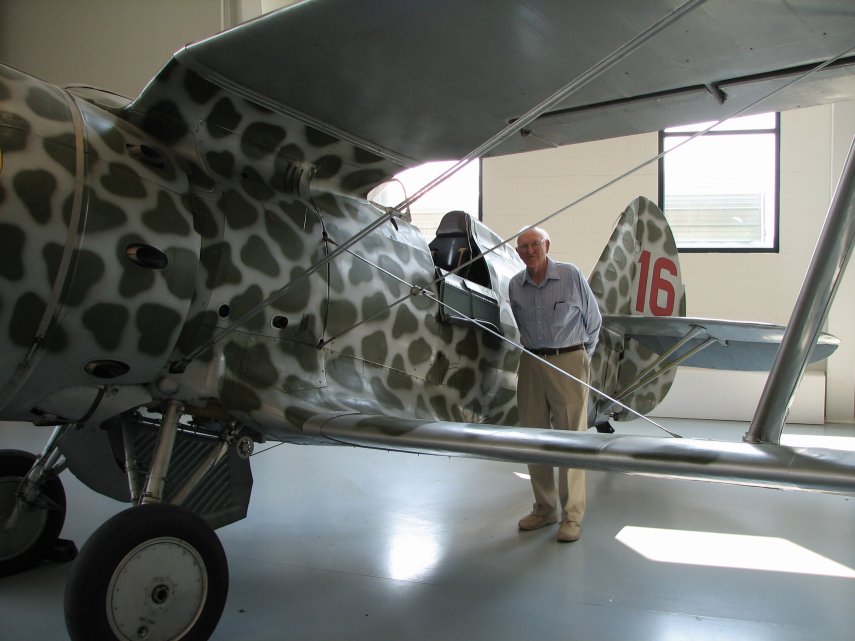
Rounding out the circle we find a beautiful little Bucker Jungmeister biplane trainer dating from the 1920s. This single-place trainer was built in accordance with the Versailles treaty limitations but was still fully aerobatically rated.
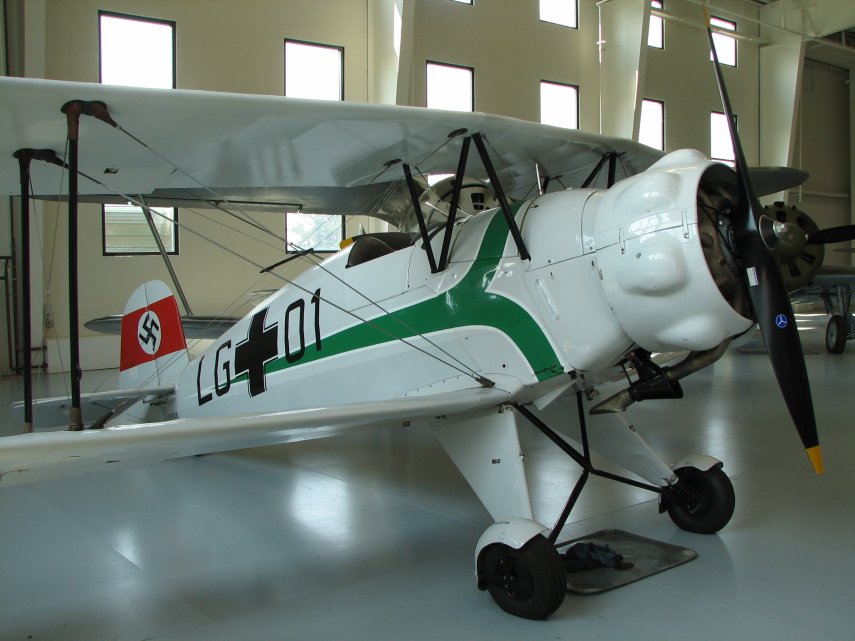
To finish out our tour of the Air Corps hangar we look to the center, behind the P-40e, to find a beautifully restored Supermarine Spitfire MKIXe. Many consider the Spit the most beautiful fighter ever. The MKIX was certainly a pretty mark.
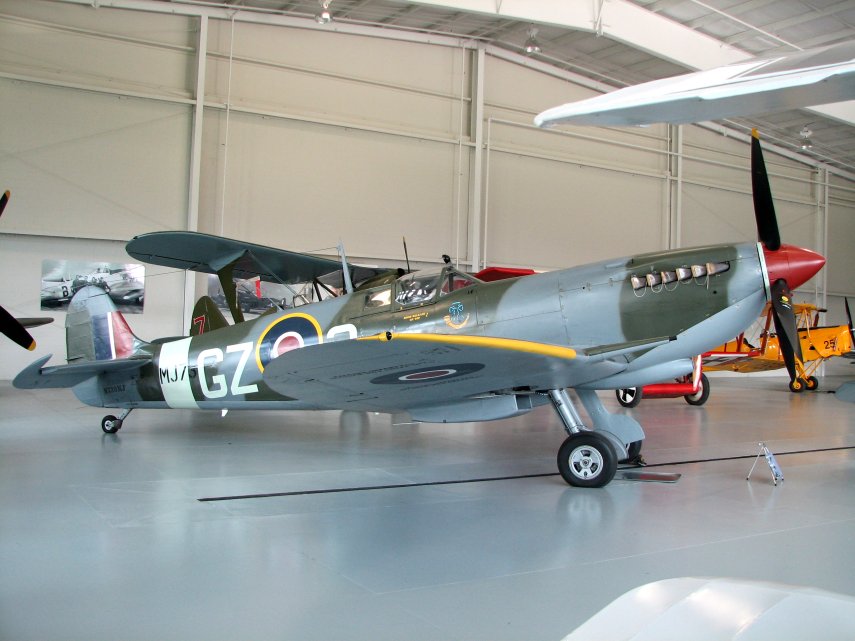
This particular Spit was finished by the Castle Bromwich factory near Birmingham in December of 1943. It flew bomber escort missions during the Italian and Southern France campaigns before finishing out the war chasing the retreating German Army from a base in Yugoslavia.
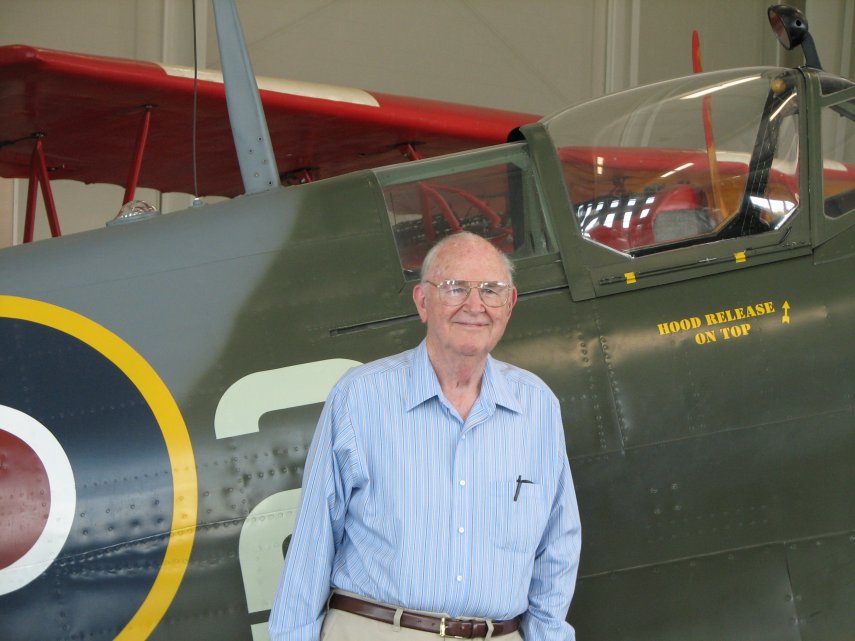
Note the gleaming "Perspex" Malcomb hood and immaculate paint job. That's my Dad in front of it.

The present author standing by the 20mm canon and 50 caliber machine gun barrels. My father and I have a particular connection to this aircraft type: During WWII, my uncle, my father's older brother, flew MKI Spits for the Royal Canadian Air Force before he died in a training accident in England.
The Navy Hangar

Upon entering the Navy Hangar, we were greeted by a gleaming SNJ4 (AT-6 Texan) Trainer:
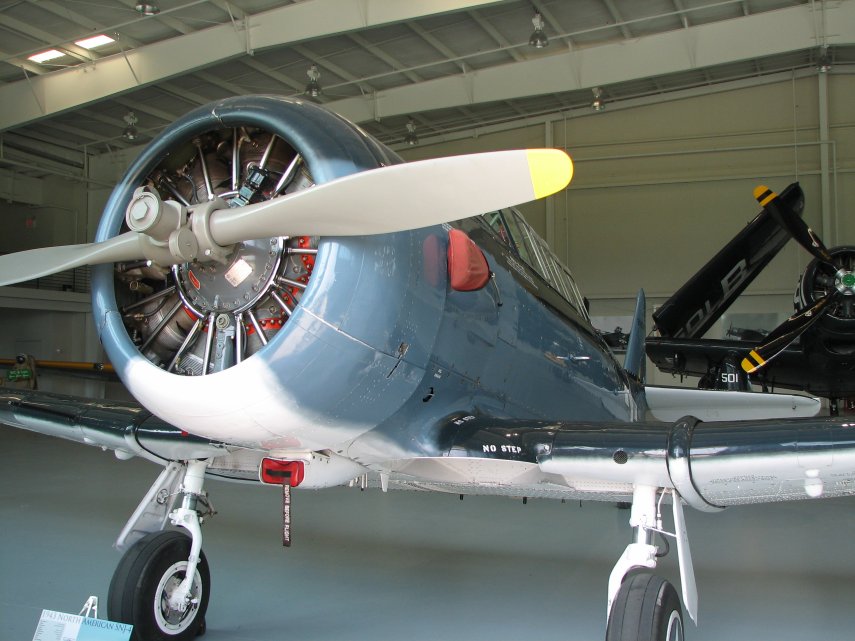
This aircraft model has served in more air forces than any other. This particular aircraft entered service to the U.S. Navy in 1943 and finally retired from its last duty to the air force of another country in 1995! Now THAT is a career.
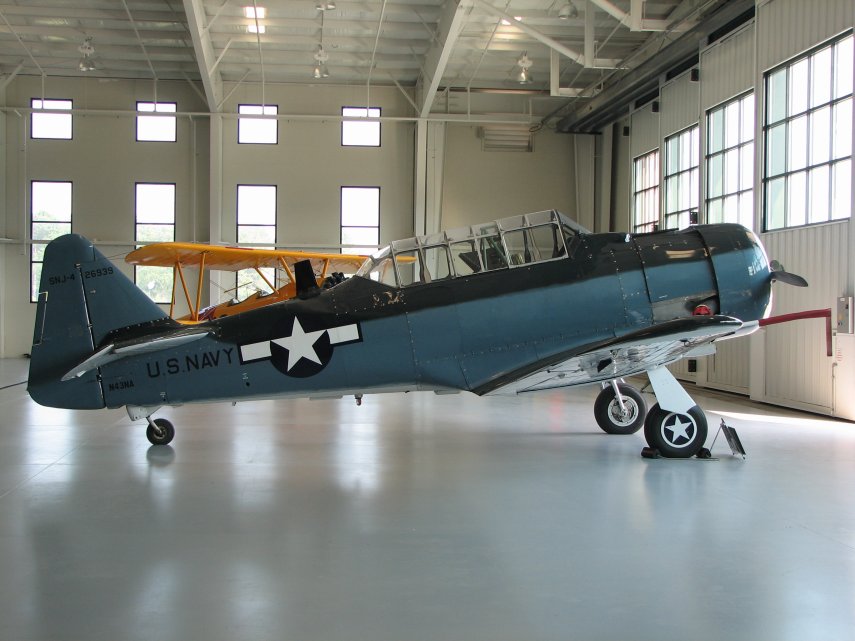
I've seen this particular plane at air shows and it ALWAYS turns heads.
Turning left to begin a clockwise tour, we move to the next display, a Pratt & Whitney Double Wasp 2800 engine, cut away to show operational detail. A motor on the back end of the crank shaft allows you to turn the engine over and see how it operates at the flick of a switch. What an impressive piece of engineering! A six-foot man is helpfully included in the shots for scale (hehehehe)
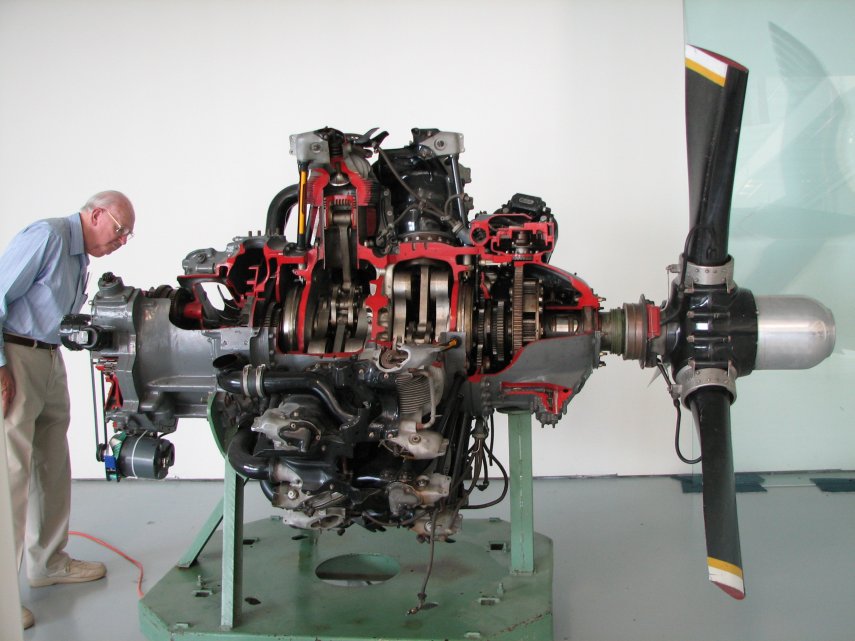
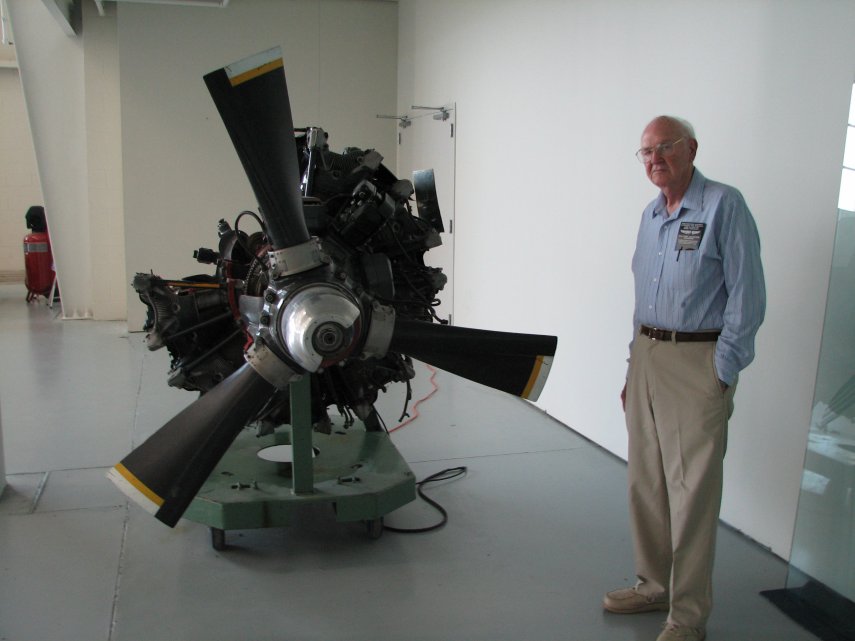
On around the circle we encounter the collection's second SNJ-4 with a slightly more flamboyant paint scheme. Note helpful astronaut at left.

I'm not sure you are going to get the scale on this next plane, but it is a whopper. Here is the collection's immaculate TBM-3e Avenger torpedo bomber. With a crew of three, a wingspan of fifty-four feet and two inches, and an internal bombay for an aerial torpedo, this is truly a large plane. Grumman-built Avengers carried the prefix "TBF" while GM-built planes carried the prefix "TBM". George H.W. Bush was flying an Avenger named "Barbara II" when he was shot down in the Pacific war. This aircraft, built for anti-submarine duty, dates from 1945. It's very first tour of duty was flown from nearby NAS Norfolk, VA. The organization has restored its ball turret to working order.
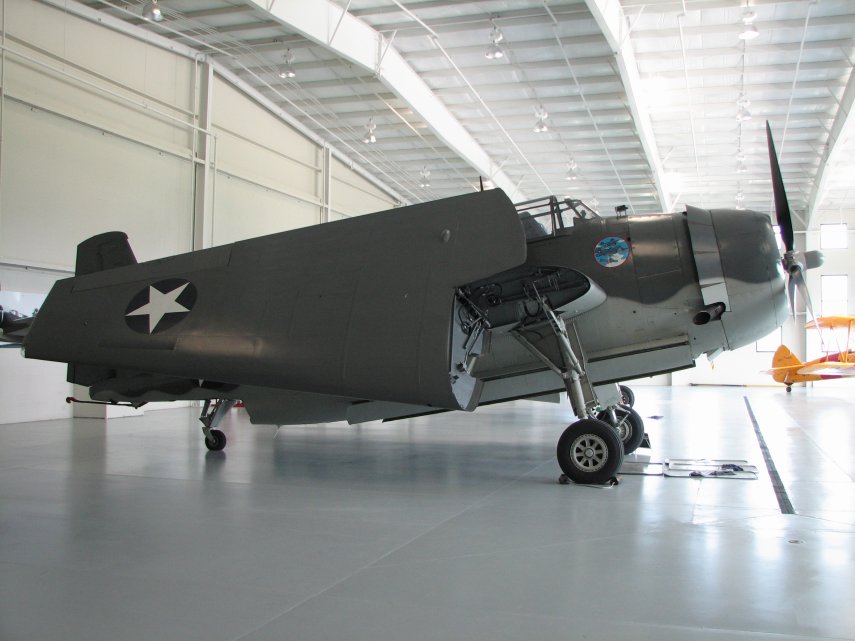
Now we move forward in history to view another extremely large aircraft, the Douglas Skyraider dating from 1947. How big? The propeller diameter is nearly fourteen feet! The Skyraider design dates from 1945, when it was designed as a replacement for the Douglas Dauntless. Skyraiders were built through 1957 and flew active combat duty through the Vietnam War where they performed close air support for infantry and pilot rescue missions. Numerous hard points allowed the Skyraider to carry a formible assortment of ordinance and the toughness of the design allowed it to survive well in the low-level environment.

And now we encounter the sturdy T-28d Trojan trainer/attack aircraft. This tough little plane was first designed as a trainer but proved its mettle enough to be returned to the factory to be modified for attack work. This example dates from 1949. My Civil Air Patrol Squadron (Knoxville Composite Squadron) was assigned one of these for a while during the '60s and early '70s, before it transitioned to a more economical L-19.
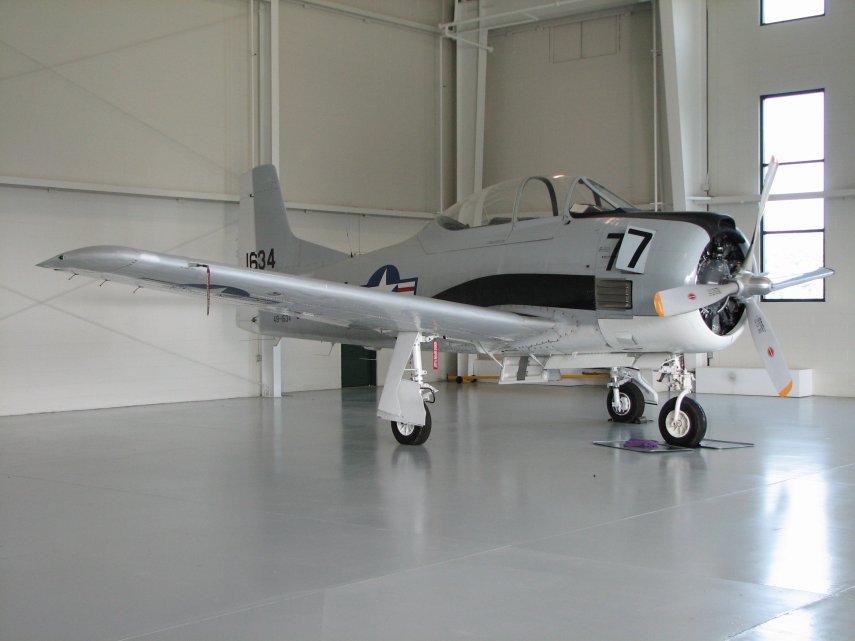
The pretty Boeing Stearman PT-17 "Kaydet" primary trainer took its first flight in 1934. By the time production was completed in 1945, over 8000 of these sturdy trainers had been built. More pilots were trained for WWII in this plane than any other. The fact that they were were painted vivid yellow and usually piloted by trainees earned them the hilarious sobriquet, "The Yellow Peril". This particular aircraft was surplused out of the military in 1946. It is painted with a red stripe to indicate its use as an instrument trainer.
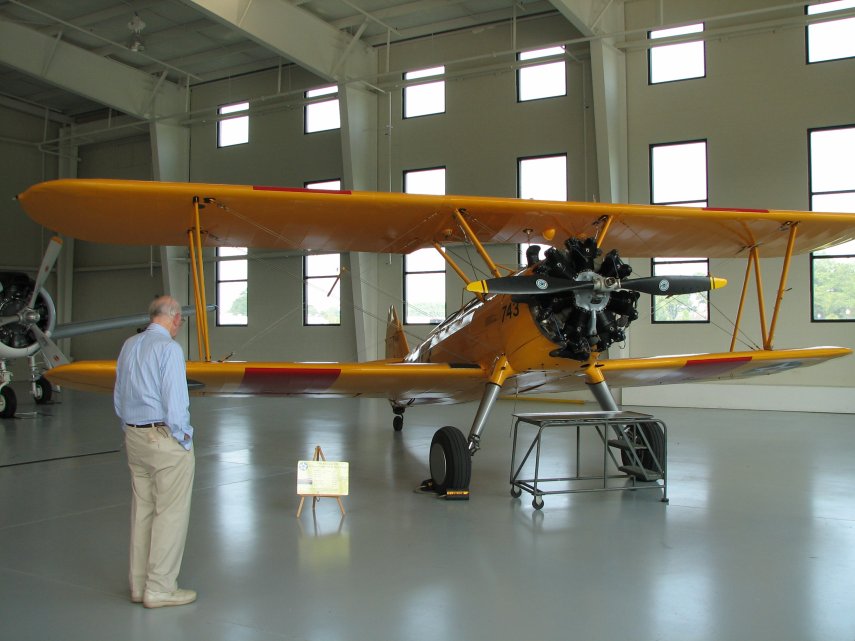
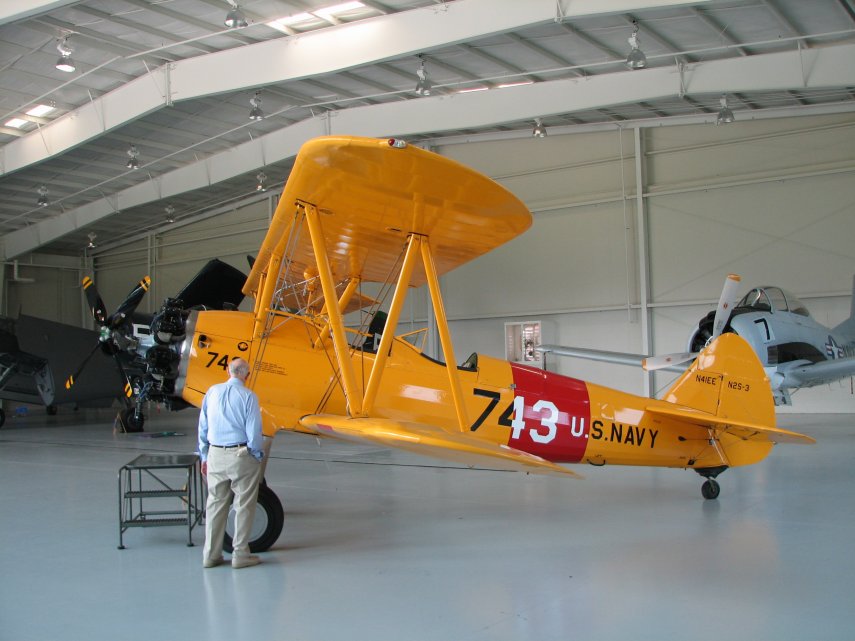
~//~
What a wonderful collection of aircraft! We were impressed with the immaculate condition of these examples and the facility in which they rested. I should mention that the hangars provided something more to me: The familiar smell of military propellor aircraft. Yep! These were military kites, alright. There's an interesting blend of paint, lubricants, gasoline, hydraulic fluid, and fabric dope, you won't find anywhere else. That familiar odor brought back rather visceral memories to me of the time I spent around military aircraft.
We were amazed at and grateful for the access granted us by the owner of these planes. An afternoon spent among them is a fun trip down memory lane as well as an invaluable resource to remind us of the conditions under which our forefathers fought and the sacrifices they made.
As we left the lovely campus, we were confronted by this fascinating sight:
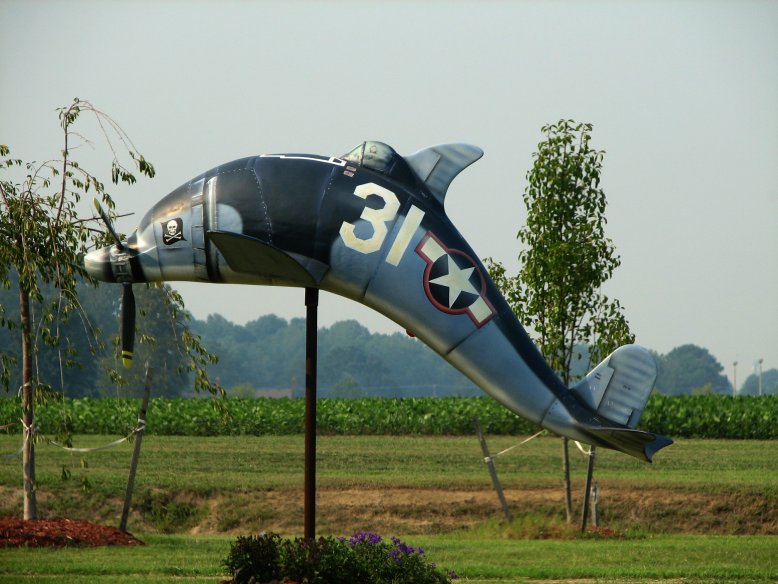
This interesting conglomeration of a porpoise and a F4U Corsair was apparently the squadron sign for the "Jolly Rogers" fighter squadron. The gull wings, body shaping, and canopy point back to VF-17 (and later VF-61, made up of several former VF-17 members) during their service with the Corsair.
August 15, 2007
You can see photos from my next trip to Virginia Beach Airport HERE.
= =
=




























